KEEP YOUR BONES HAPPY & HEALTHY
Fast facts – did you know?
Osteoporosis is estimated to affect 200 million women worldwide
2.2 million Australians are affected by osteoporosis, it especially affects post-menopausal women, who have lost the bone protectiveness of oestrogen
In Australia, the lifetime risk of osteoporotic fracture after the age of 50 is 42% in women and 27% in men
One in five women do not receive an osteoporosis diagnosis until after three or more bones have been fractured
After first experiencing a fracture, one in eight of those affected by Osteoporosis will go on to break another bone within a year.
Bone and muscle mass reduces in post-menopausal women, mostly due to the reduction in oestrogen. The more bone and muscles strength you can have pre-menopause the better.
So Ladies keep up that weight-bearing, strength-based exercise.
Not all exercise is bone strengthening or bone protective. Swimming and cycling are great cardiovascular exercises but are non-weight bearing so they don’t help build bone strength. Gentle walking, while a nice exercise, is also not going to have much impact on your bones.
The good news is weight-bearing exercise builds bone strength. Bones respond better to exercise such as:
Weight-bearing impact exercises – brisk walking, hiking, stair climbing, tennis, jogging, netball and aerobic dance.
Resistance training – exercises using weights and bands, machine weights or hand weights.
Bones also like:
Short, high-intensity bursts of exercise rather than long, slower, low impact sessions of exercise
When the exercise gets progressively harder
Variety in exercise routines
Lifting heavier weights rather than lifting light weights (though you can build this up over time)
Balance training – standing on one leg, sitting on an exercise ball, walking on uneven surface, tai-chi and yoga
Be mindful of your pelvic floor health when you exercise, ensure you breathe properly, activate your Pelvic floor muscles and exhale as you lift weights or stand up from a squat. Discuss which are the suitable exercises for you with your WH physiotherapist.
In older or elderly women weight-bearing exercise strengthens muscle, helps maintain and improve bone density, improves balance and coordination, all of which helps to prevent falls. The most common site for osteoporotic fractures is the spine, hips, wrists and shoulders so choosing exercises that load and use these parts of your body is vital. Strong Pelvic and gluteal muscles are particularly protective for hip fractures.
On average 30 minutes of bone-building exercise 3-4 times a week can help build bone strength. A great place to start is the Sassy 60’s class at WIF on Mondays with Clare, 50% off your first class.
Diet and good nutrition are vital for good bone health, calcium is important, as is vitamin D to help absorption, Vit K and magnesium. Dairy products are a good source of calcium as is salmon (especially canned – includes the bones), other oily fish, nuts, green leafy vegetables. Also important are foods containing Omega 3, such as oily fish, chia seeds, flaxseeds, nuts. We can absorb great Vitamin D levels from the sun, so a little sunshine on your skin every day is good for your bones.
Most important for your bone health, enjoy your exercise & move regularly, stomp your feet, use some weights, keep your muscles strong, stand tall, breathe well, smile & eat wholesome food.
For more information:
Have a look at the Osteoporosis Australia website – https://www.osteoporosis.org.au/exercise
You may want to try their ‘Bone Health Assessment Tool’ – https://www.knowyourbones.org.au/

